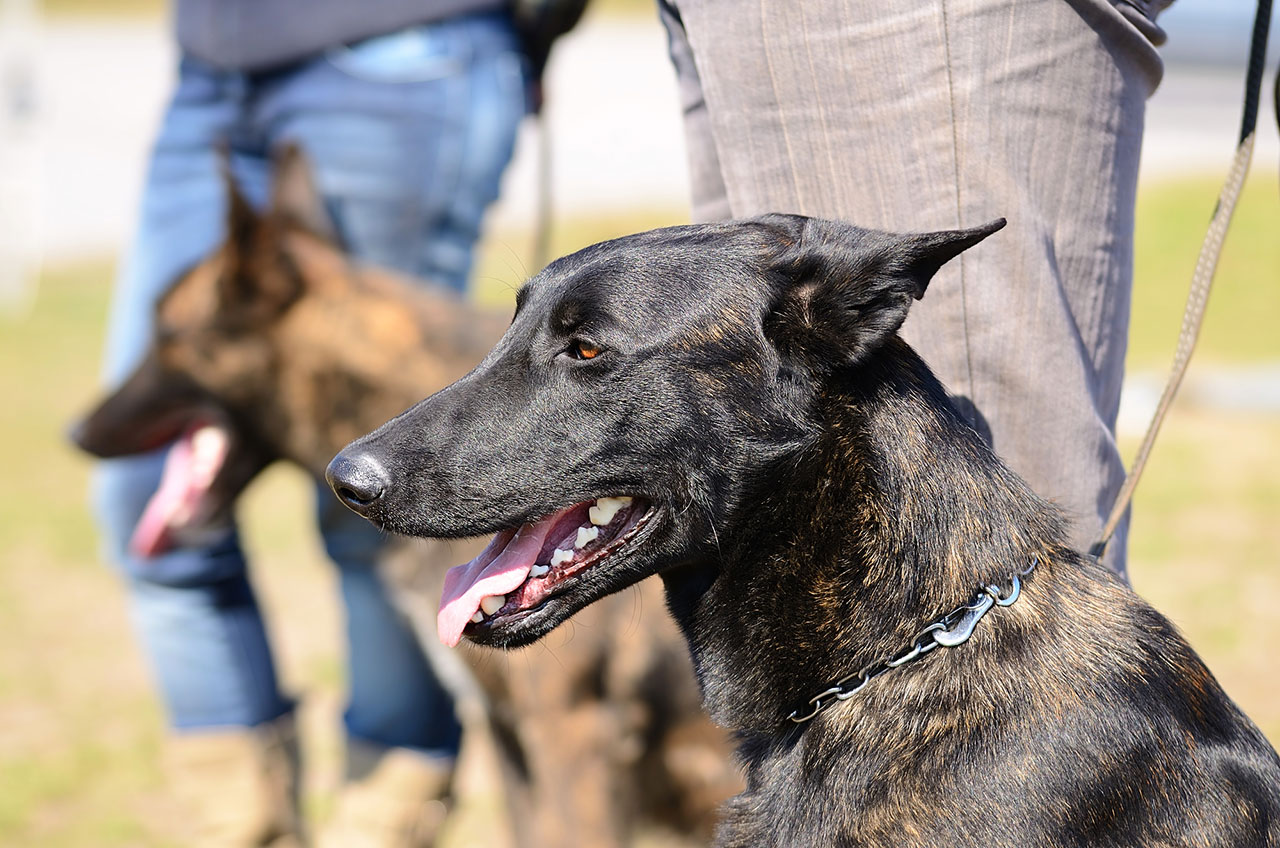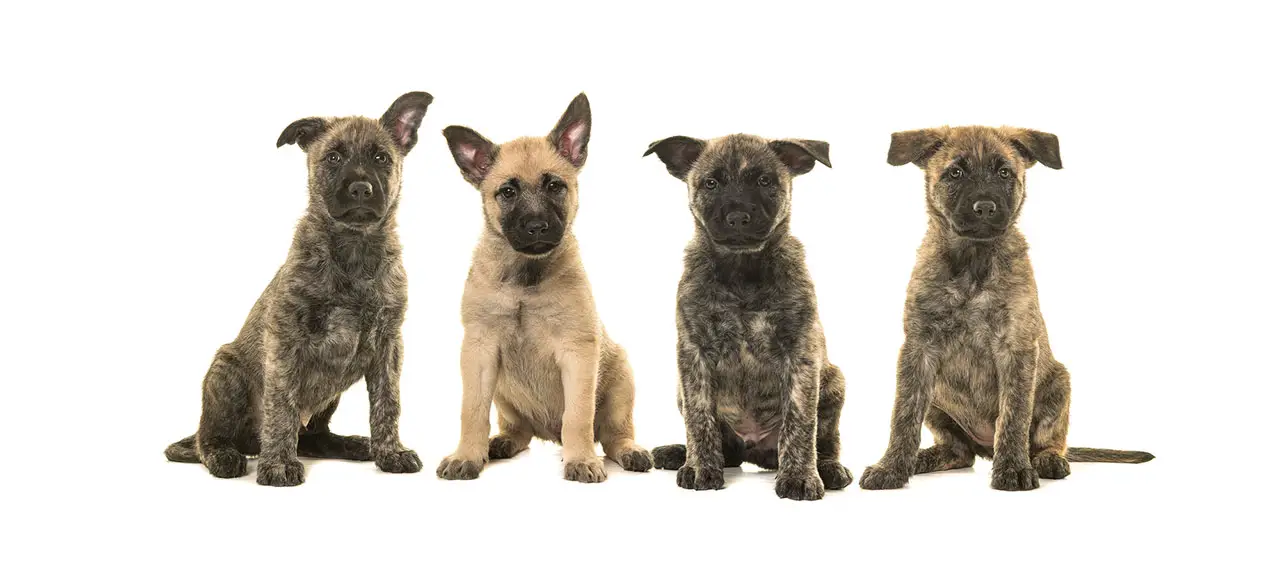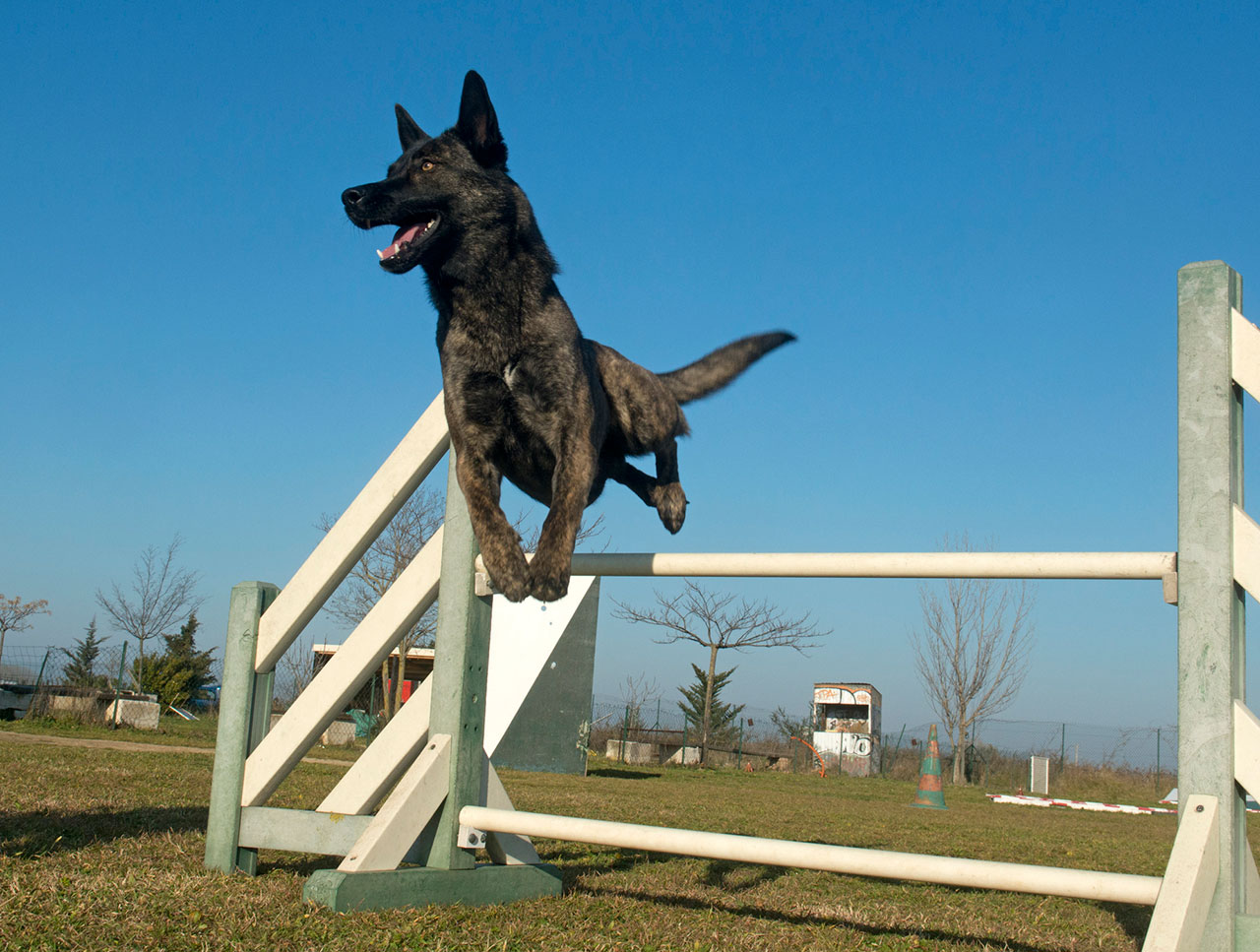The Complete Guide to Dutch Shepherd Dogs
Breed Overview
The Dutch Shepherd is an intelligent dog, an incredibly trainable jack of all trades dog that shepherds typically use in the Netherlands for general farm work. These days they are known as high-energy dogs that work as service animals, family-friendly pets, farm dogs, and police dogs.
As you might expect, the Dutch Shepherd was bred as a working dog for shepherds. Dutch Shepherds were employed on farms throughout rural Holland for various tasks. They could herd sheep and other livestock, and they could also pull carts, keep birds out of the gardens, and serve as watchdogs.
The Dutch Shepherd dog is agile, perceptive, and clever and still exhibits the instinct for herding that led to its initial development. It has an independent nature and a tendency to be a little obstinate. It can operate all day because its primary responsibilities were to retain flocks of sheep in a specific spot, reflected in its form and body.
It was created as an all-purpose farm dog and served as a guard dog, drover, and livestock dog in its early years.
The Dutch Shepherd is easily confused with his German cousin at first glance, but the breeds differ significantly physically and temperamentally.
The American Kennel Club website contains an overview of this breed type. In addition, they provide a vast array of instructional materials and policy tools, as well as monitor and address canine legislation that impacts dog ownership.
The United Kennel Club is the Dutch Shepherd’s kennel club of registry in the United States, and their breed standard was first published on January 1, 1995. The United Kennel Club, founded in 1898, is the world’s largest all-breed, performance-dog registry, with dogs from all 50 states and 25 countries registered. More than 60% of the nearly 16,000 licensed events each year are tests of hunting ability, training, and instinct.
Dutch Shepherds registered with the UKC compete in conformation, obedience, agility, rally, weight pull, nose work, dock jumping, lure coursing, and previously in protection/police dog events through the Dog Sport program is now defunct.
Highlights
Dutch Shepherd Dog has three coat types: short, long, and wire hair. The Dutch Shorthaired Shepherd is the breed most used by police officers in their work, while the Dutch Wire-haired Shepherd is extremely rare.
The main difference between Dutch Shepherds and German or Belgian Shepherds is their coat shade. Since then, these three Shepherd breeds have acquired more distinct characteristics and breed ideals.
The Dutch Shepherd breed almost became extinct after World War II, when breeding stopped in the Netherlands, and most dogs were drafted into the German army.
Compared to other shepherd dog breeds, Dutch Shepherds have fewer problems with their health. These dogs make excellent family guard dogs. They are not known to be vocal dogs but will bark when strangers enter their territory.
The Dutch Shepherd’s brindled coat can range from a sandy gold color to a reddish maroon. Too much white or black on the coat is considered a blemish.
History
The first breed standard for the Dutch Shepherd was set on June 12th, 1898. It was decided in 1914 that the Dutch Shepherd should only have a brindle coat to distinguish it from other closely similar breeds of the time, the German Shepherd and Belgian Shepherd, even though any coat color was permitted under the original standard. By 1900, in The Netherlands, sheep herds and the shepherd dogs who cared for them had mostly been replaced by industrialization and the reclamation of land for other uses. Due to its adaptability, the Dutch Shepherd was well suited for new careers as a police dog, rescue dog, and blind guide dogs. Since it still can do so, the breed is still used for herding. The United Kennel Club also recognized the Dutch Shepherd on January 1, 1995.
Traits and Characteristics of Dutch Shepherd Dogs
Size
A male Dutch Shepherd stands 21 to 25 inches tall, while a female stands 20 to 24 inches tall. The breed typically weighs between 50 and 70 pounds. Although considered average sizes, some members of this breed may be a little larger or smaller in size.
Personality
Dutch Shepherd dogs are known for their intellect and versatility and agility, guard dog work, herding, rescue operation, fieldwork, police work, guide dog work, high energy levels, and simply being family companions. They are extremely trainable, ready to please, and a sponge for new orders. This breed needs a confident trainer who can establish boundaries, keep the dog motivated to learn, and build relationships.
It is important to socialize Dutch Shepherd dogs early in life because it will help them to maintain their composure in the presence of unfamiliar people and animals. These dogs are excellent guard dogs and typically bark when an intruder approaches their territory. While this is beneficial, dogs must also learn how to mingle with visitors.
Dutch Shepherds are gentle, obedient, and wonderful with the entire family, including kids and other animals. However, they will need a lot of mental and physical exercise to avoid boredom and destructive behavior.
The Dutch Shepherd is unquestionably one of the most intelligent breeds in existence today, and their versatility has made them a favorite among trainers and dog enthusiasts. Dutch Shepherds are also known for their loyalty, intuition, and willingness to work. These dogs enjoy their work and will work hard in any role that is assigned to them.
Dutch Shepherd dogs are protective of their family and make great guard dogs. A well-socialized Dutch Shepherd from a young age, however, will be happy to make new friends. They will not hesitate to switch to guard dog mode if they detect any threat to their owners. They get along well with other animals if they are introduced to them early in life. Dutch Shepherds get along with other animals well.
Dutch Shepherds are also known for being quite versatile, as they can excel in a wide variety of roles, including guard dogs, rescue dogs, fieldwork, and more.
Whether you are looking for a working dog or a loyal family companion, this dog is an excellent breed to consider. With their loyalty, intelligence, and willingness to work, they are sure to make a great addition to any home.
Health and Common Issues
In general, the Dutch Shepherd has fewer health issues than other breeds. However, as with other herding breeds, there is some concern about anesthetic sensitivity, which should be discussed with your veterinarian prior to any surgery requiring general anesthesia. The Dutch Shepherd hasn’t changed much over the years, which contributes to its exceptional overall health, but we still recommend getting your dog checked up. Allergies, masticatory myositis, pannus, cryptorchidism, and inflammatory bowel disease are examples of confirmed hereditary illnesses found in Dutch Shepherds.
In addition, Hip dysplasia has been identified in the Dutch Shepherd breed. Hip dysplasia is the abnormal formation of the hip joint, which leads to a loss of function and mobility.
The Dutch Shepherd is a hardy breed with few health problems. However, like all breeds, they are susceptible to certain health conditions. The Dutch Shepherd is a relatively new breed, so not much is known about its long-term health. However, the breed is generally healthy and has few known health problems.
What to Expect When Caring for Dutch Shepherd Dogs
Care
A typical Dutch shepherd home will be busy, stimulating, and responsible for the dog’s grooming. These dogs do not tolerate being left alone for long periods. Problem behaviors are likely to develop if they do not receive adequate enrichment.
They may have a strong sense of self-reliance. Because of this and the breed’s ferocious intelligence, Dutch Shepherds will learn on the fly, sometimes without their owners’ instruction.
Dutch shepherds demand a lot of mental and physical exercise. Therefore, it’s ideal to have a Dutch shepherd on a farm or in a house with a fenced yard so long as he can receive plenty of regular exercise every day. Dutch shepherds are capable of exerting themselves continuously throughout the day and will happily run or hike alongside their owners.
Feeding
Due to their propensity for gaining weight, Dutch Shepherds should consume a diet rich in biologically suitable proteins, healthy fats, pulverized bones, and vegetables for optimum health and performance. Maintaining an appropriate healthy weight is essential for your dog or any dog breed.
Dutch shepherd dogs that are fully grown receive a balanced diet from high-quality dry dog food, which they can combine with canned food, broth, or water. Cooked eggs, fruits, vegetables, and cottage cheese may be the favorites of your Dutch shepherd dog, but they shouldn’t make up more than 10% of his daily nutrition.
Coat Color and Grooming
The three coat varieties of the Dutch Shepherd are short hair, long hair, and wire hair which are also called rough coats. The short hair has a woolly undercoat. Wire hair is dense and coarse, and like the short-hair variety, it has a woolly undercoat. The long, straight hair feels a bit scratchy.
In most weather circumstances, the Dutch Shepherd is kept warm and dry in these coats. They often have different hues of brindle with silver and gold, while some are pale, sandy hues, and others are red.
A coating with too much white or black is regarded as flawed or less desirable. However, for maintenance, both short and long-haired coats require routine brushing. Brushing is necessary to remove loose or dead hairs, particularly from the undercoat.
Dutch shepherds and German shepherds can be distinguished most easily by their coats because only Dutch shepherds have brindle coloring. Dutch shepherds weigh between 45 and 75 pounds and stand about 2 feet tall, making them smaller than their German cousins.
Both the short and long-haired varieties require regular brushing. The wire-haired Dutch Shepherds, however, should not be brushed at all. Instead, they should be groomed once or twice a year. Overbathing any of the coat types is not recommended. The reason why is because their coats will lose their weatherproofing ability. You should start brushing your Dutch Shepherd’s teeth, clipping his claws, and cleaning his ears at a young age.
Exercise
The Dutch Shepherd, a relative of the German and Belgian Shepherd Dog, shares many characteristics with both breeds, including being very athletic, energetic, task-oriented, and clever. However, these athletic dogs may be exceedingly domineering and dominant without adequate training. Maintaining a Dutch Shepherd won’t require much labor, but it will require regular exercise, training, and socialization from an early age.
Due to their energetic and athletic nature as a herding breed, Dutch Shepherds have rather high exercise needs. Due to their high intelligence, these dogs will need a range of daily activities that will mentally and physically challenge them, such as fetching, walking, games, and canine sports. They are excellent for cycling and jogging too.
Adult Dutchies need exercise for at least an hour every day. When your Dutchie puppy reaches the age of three months, you can start exercising it by taking it on short walks. As the puppy gets older, you can gradually lengthen the walks.
You must exercise your Dutch Shepherd every day. These dogs have a very strong work ethic; in other words, they must always be doing something. They will become nervous, rebellious, and destructive if they aren’t engaged in regular activity. Regular exercise is fantastic for the dog’s mental health and your own.
Training
As soon as possible after purchase, the Dutch Shepherd should begin training. They are an independent breed of dog that requires a handler who is skilled at dealing with their stubbornness. Starting this breed’s training when it is still a puppy and eager to please its owner is the ideal option. Starting the puppy’s basic obedience training should happen when it is six weeks old. The greatest time to start the training is now.
After your Dutch Shepherd puppy has mastered the fundamentals, you can begin further training at 4-6 months of age. During this time, your dog will need a lot of mental stimulation as well as a lot of activity. So let them participate in dog sports, agility, and other activities to keep their bodies and minds in good shape.
You should start your Dutch Shepherd’s basic training in the convenience of your own home. They may have a history of fear, which could have an impact on their training. The ideal place to train them is at home because basic training doesn’t take much space. Additionally, there won’t be as many distractions at home as there would be at parks or other public spaces.
Your dog may require an open space where they can perform advanced training such as agility, socialization, and other dog sports that cannot be performed at home. Your Dutch Shepherd should have learned basic obedience and other skills at this point, making it easier to progress to more advanced training.
The Dutch Shepherd is a joy to train for the experienced owner because it is intelligent and obedient. They expect their trainer to be a leader. They can detect uncertainty or hesitation quickly. They may try to take the dominant position in the relationship, which should be avoided to avoid undesirable traits such as aggression or boisterous behavior.
For this independent breed, firm training without punishment works best. However, Dutch Shepherds can become bored quickly, so repetition and excessively long training sessions should be avoided.




